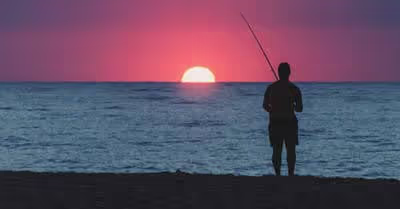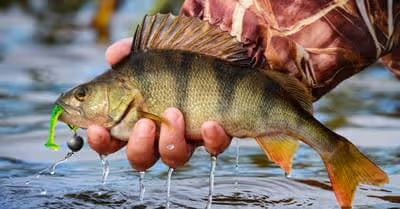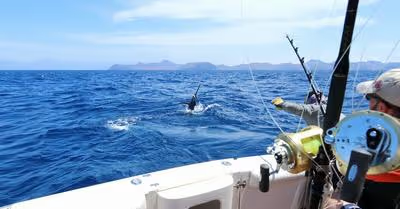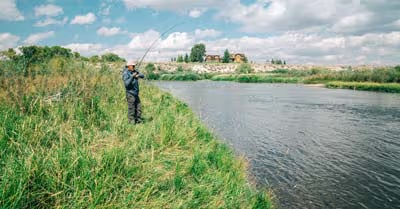Table of Contents
Length
The fishing rod length is certainly the most obvious metric used when choosing the right rod for your fishing adventures. The length of a fishing rod is measured from the tip to the butt and can range from 4 feet to a monstrous 15 feet. The standard size of fishing rod that you can use, however, ranges from 6 to 8 feet.
The unwritten rule when it comes to selecting the right rod size or length, for that matter, is that longer rods cast longer distances while shorter rods can be perfect if you want to cast in shorter distances. But is this of great importance? Yes, it is. Longer rods are perfect if you want to cast a great distance and cover more water. They're perfect for deep-diving crankbaits, walking baits, and if you're using power fishing reaction baits. You can also use them if you're angling in saltwater, especially from the piers or docks.
On the contrary, shorter rods are perfect for close combat. They are perfect when casting longer distances or when covering more water isn't a priority. Shorter rods generally have less bend or stretch, particularly when fighting fish and this makes them superb for big fish. These rods can be a great choice when trolling for walleye and such similar species, as well as for kayak anglers with a limited amount of space.
Here are some aspects to consider when choosing the right rod length.
Accuracy - Simply put, shorter rods tend to offer more accurate casts than longer rods. Shorter rods are a lot easier to maneuver and manage as they require less energy to load, flex, or put in motion. A short rod, measuring 6 feet or less is, therefore, the perfect rod for you if you're looking to make short and accurate casts. Keep in mind that shorter rods can be ideal if you're fishing in dirty waters or in waters that have heavy covers and you suspect that snagging could be an issue.
Distance - If covering more water and casting longer distances is top of your priority, then longer rods are the best way to go. If you're looking for a rod that can be perfect for throwing a 30-yard cast, a rod measuring 7 feet and above should be the way to go.
On the other hand, you can go for a fishing rod measuring 7 feet or over if pinpoint accuracy isn't top of your priority list. The idea here is that you'll sacrifice accuracy by going for longer distances. Needless to say, you can't be as accurate at 30 yards as you'd be at 15 yards. Longer rods are also great if you want to cast in clear waters. This is because fish tend to go deeper into clear waters, so it would only make sense to have a rod that gives you the ability to access that extra depth.
Comfort - As we noted earlier, fishing rods are very personal tools and you have to be very honest with yourself when choosing the ideal fishing rod size. Your favorite pro angler may recommend an 8-foot rod, but this doesn't mean that it will work for you as it works for them. Well, your pro angler may be over 6-foot with an upper-body strength of a pro athlete, and maybe you do not have these body features.
As such, it's of great importance to choose an appropriate rod; something that you're comfortable with. If you're short, you may be more comfortable with a shorter rod than if you're tall and vice versa. Generally, most anglers can comfortably handle 7-foot rods but something above that can be quite challenging if you aren't blessed with height. All in all, get to know your comfort zone and stick to it.
Leverage - Longer rods tend to have heavier actions and this gives them more leverage than shorter fishing rods, which tend to have lighter actions. Such leverage is fundamental on the hook-set given that a longer rod can move more line faster when compared to a shorter rod. Again, longer, heavier action rods lose less energy as they can flex less than lighter rods.
Material
Rod materials are also, without a doubt, an important factor when choosing the right fishing rod for you. The best fishing rods out there are made from fiberglass, graphite, or a combination of the two. Let's briefly highlight them.
Fiberglass - Rods made from fiberglass are generally softer and more forgiving, which makes them superb when using treble-hooked baits. They're heavier, more flexible, and virtually unbreakable and, of course, more durable than graphite rods.
Graphite - Rods made from graphite tend to be lighter, stiffer, and more sensitive thanks to their brittle nature and lighter weight. This makes them perfect for detecting lighter bites and that's why they're ideal for plastic worm baits and jig fishing. Unfortunately, they tend to break more easily when compared to fiberglass rods.
A combination of both fiberglass and graphite - Rods that are made from both fiberglass and graphite gives you the best of both worlds. They're flexible, more sensitive, and durable. When choosing the rod with the right material, you can consider a combination of both fiberglass and graphite as they're always ideal for various fishing situations, locations, and conditions.
Power
Materials and rod lengths are not the only important factors to consider when choosing the right fishing rod for you. You should also look at the power of the rod and what it gives you while out there on the water. Power essentially refers to how much it would take you to make the fishing rod bend. A rod with more power will bend easily and won't require you to use a lot of force or energy. Generally, the right combination of power and action (more on this later) will make your rod more effective.
That being said, you want a rod that has more power. For instance, light or ultra-light rods have more bend so that you can easily detect a bite, especially when angling for smaller species such as panfish and trout.
Differently, rods with moderate power are perfect when using reaction-based lures such as spinnerbaits, jerk baits, and crankbaits. They can also be ideal if you are using finesse presentations and do not want the line to snag or break. Finally, heavier rods are best when using topwater lures, jig, frog, or any lure that doesn't necessarily require the rod to bend that much.
Action
Action refers to that point of the rod where it bends. A "slow" action rod generally bends close to the butt while a "fast" action rod bends nearer to the tip. Most anglers prefer fast action rods as they are stiff and are specially designed for catching bigger and hard-fighting fish. On the contrary, you can go for slow action rods if you're targeting small fish.
Handle
You certainly want a rod that feels comfortable in your hands. While most fishing rods are made from either foam or cork, some have a combination of the two. When it comes to choosing the right rod, the handle may largely depend on your personal preference and what works for you. The handles can also be shorter or longer but this may depend on the distance that you want to cast. Shorter handles are perfect for casting with one hand or roll casting while longer handles are perfect if you want to cast with both hands.
Bottom Line
Purchasing the perfect fishing rod for you can be a challenging process, especially if you don't know how to go about it. Use the above-described guidelines and you'll find a rod that works best for you in making your fishing escapades a lot better and more fun.
Recent Articles
















